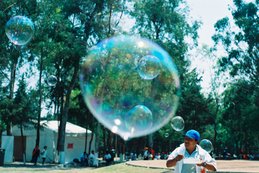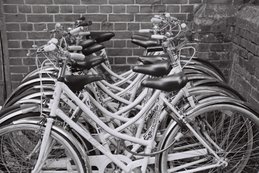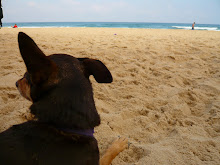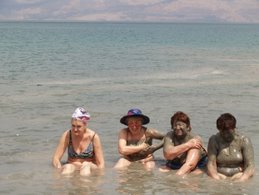
















I was in Calcutta during the Kali Puja. In a brief visit I got to see my friend Ruchira and her husband Mallar so that made my visit to this badly reputed city a lot more enjoyable. I dont know if it was the fact that I had local hosts or the fact that I could only stay 2 days because of the call for a general strike (I had to get out soon or get stuck there for many days), but I didn't see people dying in the streets or hundreds of beggars as we tend to picture the city because of what has been written about it. What I did see and plenty of is Kali altars EVERYWHERE, since I was there during this Pooja.
According to Hindu mythology Goddess Kali is the first of the ten incarnations of Goddess Durga. Depicted with a fierce face and terrifying look Goddess Kali is regarded as the more aggressive form of Goddess Durga. The image of Kali usually shows her foot on Lord Shiva’s chest, a severed head in one hand, her sword in the other and wearing a garland of skulls. Kali is worshiped as the Mother Goddess who is known to destroy all evil and is a fierce fighter for the cause of justice.
According to legends once the demons named Shambhu and Nishambhu grew in force and pose a challenge to Indra, King of Gods, and his Kingdom of Heaven. Gods sought protection from Mahamaya Durga, the Goddess of Shakti or Power. At this stage Goddess Kali was born from Durga's forehead as Kal Bhoi Nashini to save heaven and earth from the growing cruelty of the demons.
After slaughtering the demons, Kali made a garland of their heads and wore it around her neck. In the bloodbath, she lost control and started killing anyone who came her way. There was chaos all around. To stop her, Lord Shiva threw himself under her feet. Shocked at this sight, Kali stuck out her tongue in astonishment, and put an end to her killing spree. The well-known picture of Kali Ma shown with her tongue hanging out, actually depicts the moment when she steps on Lord Shiva and repents.
That day is celebrated ever since as Kali Pooja. Performing the Puja with faith devotees seek protection against drought and war and blessings of general happiness, health and prosperity.
It is fun to see all of these Kalis, ranging from the ostentatious golden ones to the really gory-kitschy ones.
Here you can also see some pics from Puri in the state of Orissa. Puri is a fishermen's village and a small tourist destination, and has an ancient temple to worship Lord Jagarnath, another name for Lord Krishna (the reincarnation of Brahma the creator). Honestly I don't really understand most of the gods and the rituals but I find the little depictions of Jagarnath to be quite funny.
































